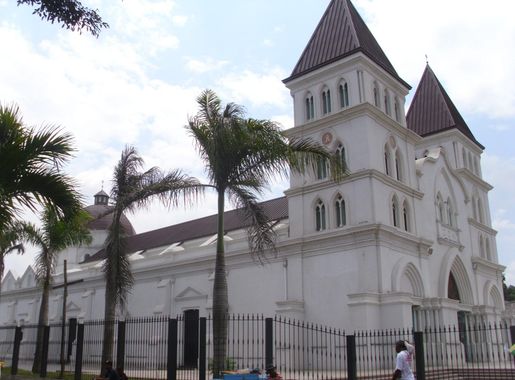
Los Salados: The Hidden Gem of Santiago
Discover Los Salados in Santiago: A vibrant neighbourhood rich in culture, history, and natural beauty, offering a genuine Dominican experience away from the city center.
Nestled in the vibrant city of Santiago, Los Salados offers tourists a unique blend of rich history, cultural vibrancy, and natural beauty. This neighbourhood is an oasis for those looking to experience the true essence of Dominican life, away from the hustle and bustle of the city center. Begin your exploration with a visit to the local markets, where you can find fresh produce, handmade crafts, and traditional Dominican dishes. The friendly vendors are always eager to share stories and give insights into their way of life. For nature lovers, Los Salados boasts beautiful parks and green spaces. Enjoy a leisurely stroll or a picnic under the shade of lush trees. The neighbourhood's scenic beauty provides a perfect backdrop for photography enthusiasts. Culture buffs will appreciate the local art scene, with various murals and street art that tell the story of Los Salados' rich heritage. Visit the community centers to witness local music and dance performances, which are a testament to the neighbourhood's vibrant cultural identity. In the evenings, Los Salados transforms into a lively hub with local restaurants and bars offering delicious Dominican cuisine and refreshing cocktails. Don’t miss the opportunity to try the famous 'Sancocho,' a hearty stew that is a staple in Dominican households.
Local tips in Los Salados
- Visit the local markets early in the morning for the freshest produce and a lively atmosphere.
- Wear comfortable shoes as the best way to explore Los Salados is on foot.
- Carry a camera to capture the stunning murals and street art that decorate the neighbourhood.
- Try the local 'Sancocho' at one of the neighbourhood's family-run restaurants for an authentic taste of Dominican cuisine.
- Engage with the locals; they are friendly and often have fascinating stories to share about the area.
Los Salados: The Hidden Gem of Santiago
Nestled in the vibrant city of Santiago, Los Salados offers tourists a unique blend of rich history, cultural vibrancy, and natural beauty. This neighbourhood is an oasis for those looking to experience the true essence of Dominican life, away from the hustle and bustle of the city center. Begin your exploration with a visit to the local markets, where you can find fresh produce, handmade crafts, and traditional Dominican dishes. The friendly vendors are always eager to share stories and give insights into their way of life. For nature lovers, Los Salados boasts beautiful parks and green spaces. Enjoy a leisurely stroll or a picnic under the shade of lush trees. The neighbourhood's scenic beauty provides a perfect backdrop for photography enthusiasts. Culture buffs will appreciate the local art scene, with various murals and street art that tell the story of Los Salados' rich heritage. Visit the community centers to witness local music and dance performances, which are a testament to the neighbourhood's vibrant cultural identity. In the evenings, Los Salados transforms into a lively hub with local restaurants and bars offering delicious Dominican cuisine and refreshing cocktails. Don’t miss the opportunity to try the famous 'Sancocho,' a hearty stew that is a staple in Dominican households.
Iconic landmarks you can’t miss
Monument to the Heroes of the Restoration
Explore the Monument to the Heroes of the Restoration in Santiago de los Caballeros, a cultural landmark celebrating Dominican history and independence.

Duarte Park
Discover the serene beauty and cultural richness of Duarte Park, a must-visit urban oasis in Santiago de los Caballeros for every traveler.
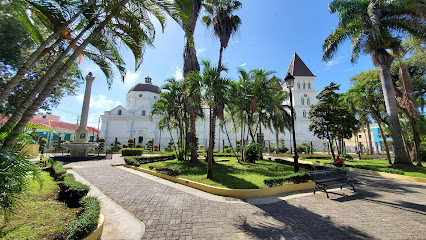
Jardín Botánico de Santiago Profesor Eugenio de Jesús Marcano Fondeur
Discover the lush landscapes and diverse plant life at Jardín Botánico de Santiago, a serene escape in the vibrant city of Santiago de los Caballeros.
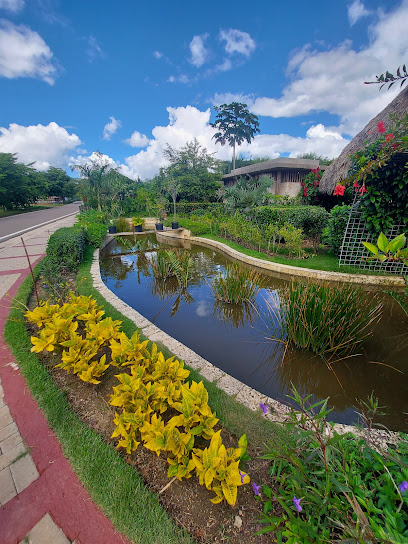
Fortaleza San Luis
Immerse yourself in the Dominican Republic's history at Fortaleza San Luis, a historic fortress offering engaging exhibits and breathtaking views.
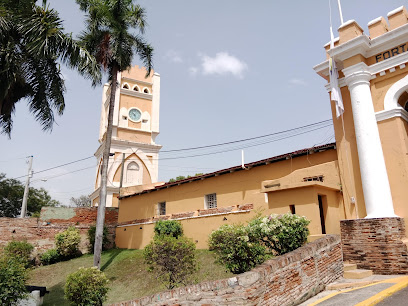
Parque Metropolitano de los Jardines
Discover tranquility at Parque Metropolitano de los Jardines, a lush urban park in Santiago de los Caballeros, perfect for relaxation and nature exploration.
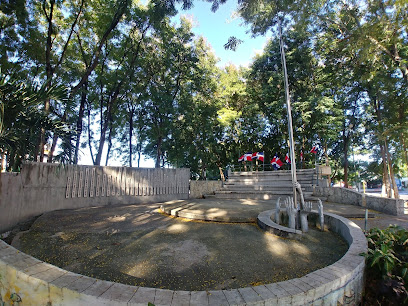
Tres Cruces Park
Experience the serene beauty and cultural charm of Tres Cruces Park in Santiago de los Caballeros, a hidden gem for nature lovers and local culture enthusiasts.

Casa de Arte
Explore the vibrant art scene at Casa de Arte in Santiago de los Caballeros, a must-visit gallery showcasing Dominican creativity and culture.

El Saltadero de Jacagua
Experience the breathtaking waterfalls and lush landscapes of El Saltadero de Jacagua, an ecological park perfect for nature lovers and adventure seekers.
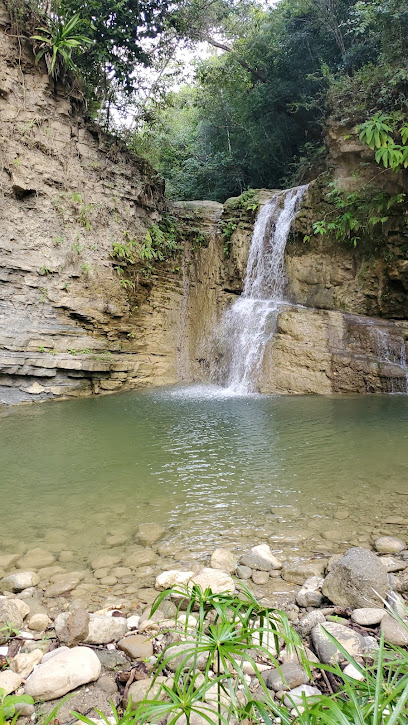
LOS SALADOS
Experience the rich culture and vibrant community of Los Salados, a charming housing development in Santiago de los Caballeros, Dominican Republic.

Palacio Consistorial
Explore the historical treasures of Palacio Consistorial in Santiago de los Caballeros, a cultural gem showcasing Dominican heritage.
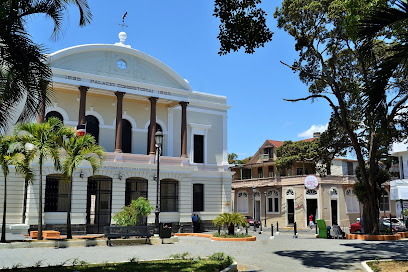
MI VIVIENDA LOS SALADOS
Experience the vibrant culture of Santiago de los Caballeros from the comfort of Mi Vivienda Los Salados, your home away from home.
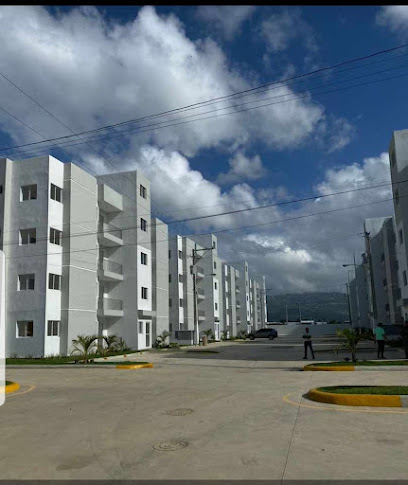
Boulevard Las Tres Cruces
Explore Boulevard Las Tres Cruces: A Historical Landmark Celebrating Santiago de los Caballeros' Rich Heritage and Cultural Vibrancy.
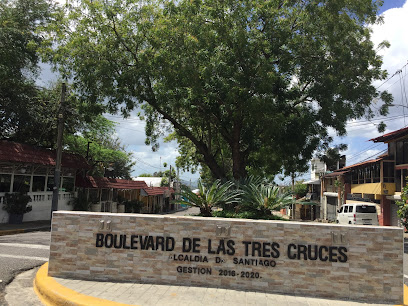
Los Salados Viejos
Experience the vibrant culture and warm hospitality of Los Salados Viejos, a charming housing society in Santiago de los Caballeros, Dominican Republic.
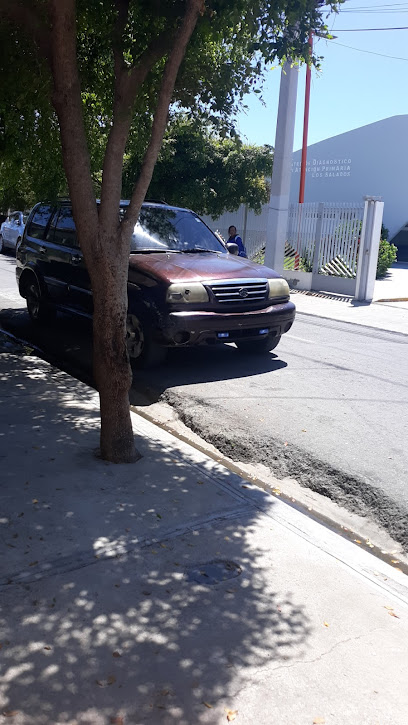
Centro de Recreo
Explore Centro de Recreo: A Historical Landmark in Santiago de los Caballeros, Rich in Culture and Local Charm.
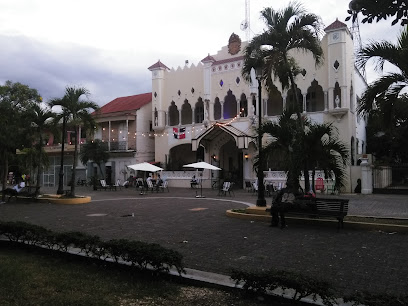
Salados
Explore unique treasures at Salados Auction House in Santiago de los Caballeros, a cultural hub for art lovers and collectors alike.
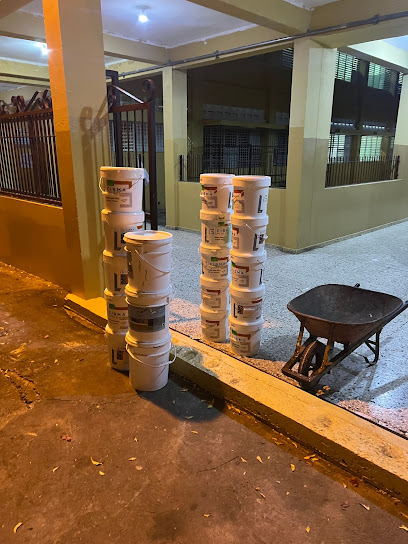
Unmissable attractions to see
Fortaleza San Luis
Explore the historic Fortaleza San Luis, a military fortress and museum in Santiago de los Caballeros, revealing the Dominican Republic's rich heritage.
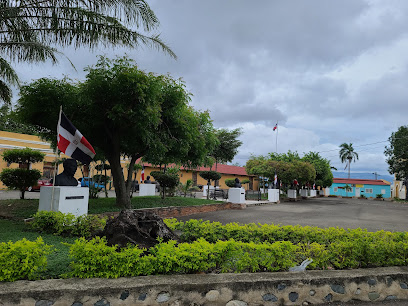
Palacio Consistorial
Discover the rich heritage and stunning architecture of Palacio Consistorial, a premier museum and tourist attraction in Santiago de los Caballeros.
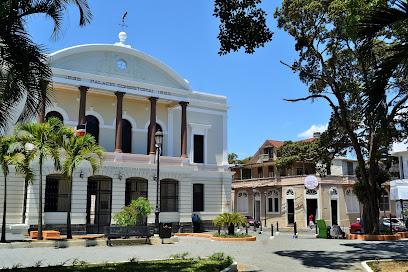
Essential places to dine
Family’s Food Truck
Experience the authentic flavors of Santiago de los Caballeros at Family's Food Truck - a family-friendly culinary delight!
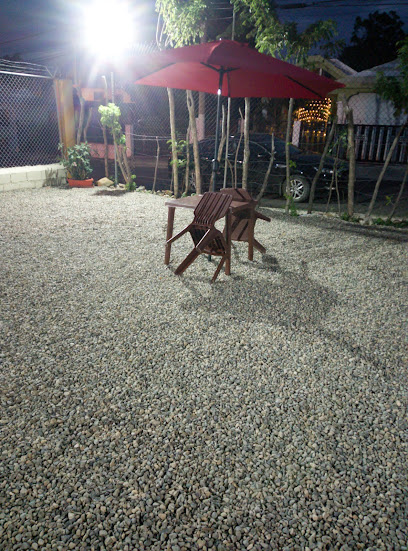
El rancho de fela
Experience authentic Dominican flavors at El Rancho de Fela in Santiago - where every dish tells a story!
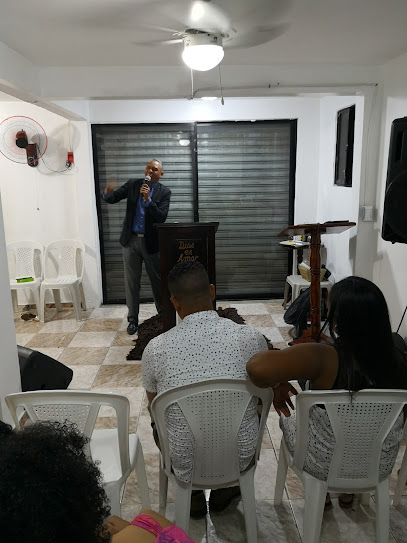
Manuel Piano
Discover the culinary artistry at Manuel Piano in Santiago de los Caballeros—where local flavors meet international cuisine for an unforgettable dining experience.
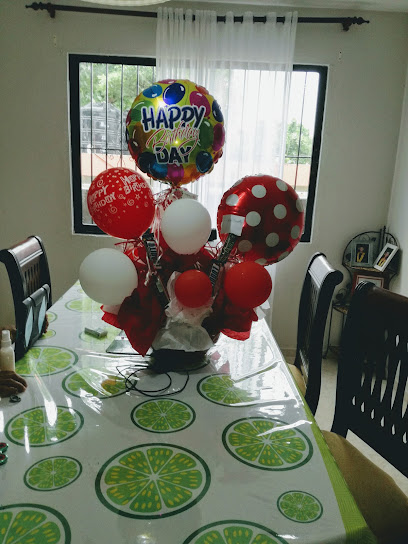
elcoropizzeria
Discover authentic Dominican flavors at El Coro Pizzeria in Santiago de los Caballeros, where every pizza tells a delicious story.

Wings & Wings Bufalo
Experience the best buffalo wings in Santiago at Wings & Wings Bufalo – where flavor meets fun in a vibrant setting.

Comedor Y Asadero Doña Ana
Experience authentic Dominican flavors at Comedor Y Asadero Doña Ana - where family dining meets culinary tradition in Santiago.
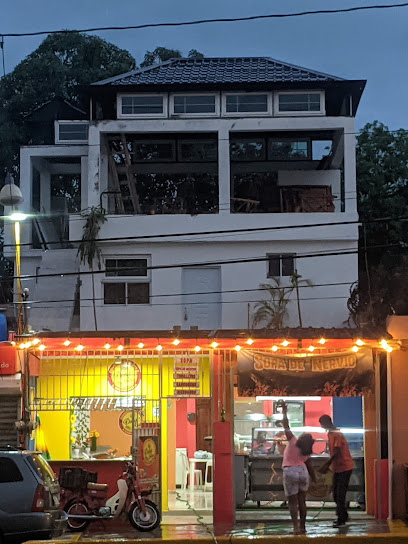
COMEDOR DON MARCELINO
Experience authentic Dominican flavors at Comedor Don Marcelino - a family-friendly gem in Santiago de los Caballeros.
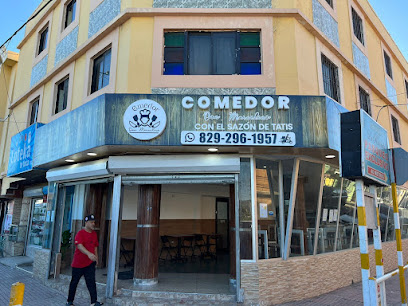
Comedor Loly
Experience the authentic flavors of the Dominican Republic at Comedor Loly in Santiago de los Caballeros – a must-visit restaurant for food lovers.
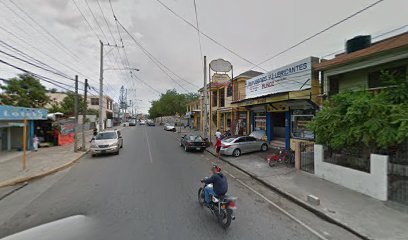
Jairo coronado
Experience authentic Dominican cuisine at Jairo Coronado in Santiago de los Caballeros – where every dish is a celebration of flavor and tradition.
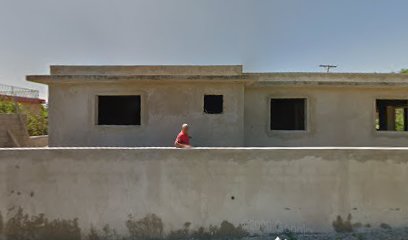
El Sabor de Las Antillas
Discover the essence of Caribbean flavors at El Sabor de Las Antillas in Santiago de los Caballeros, where every dish tells a story.
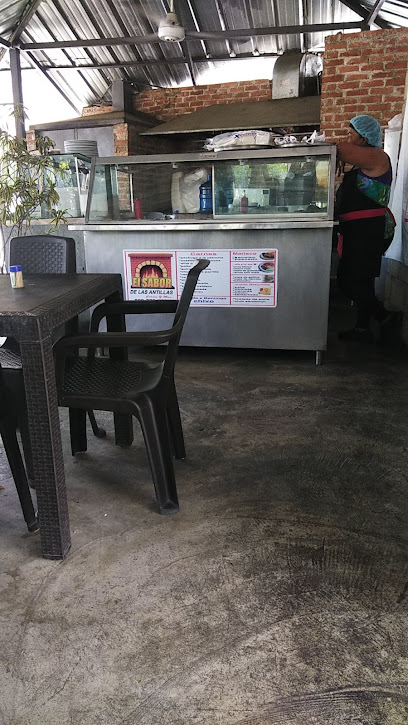
Markets, malls and hidden boutiques
Alis Boutique “La Grandota”
Explore the vibrant fashion scene at Alis Boutique “La Grandota” in Santiago de los Caballeros, where local artistry meets contemporary style.
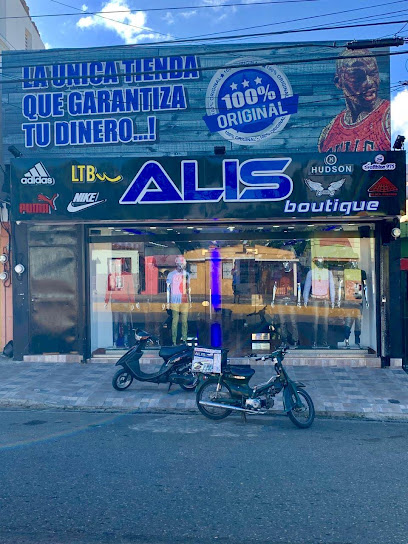
Los salados nuevos
Explore Los Salados Nuevos: A vibrant home goods store in Santiago de los Caballeros offering unique Dominican treasures and memorable shopping experiences.
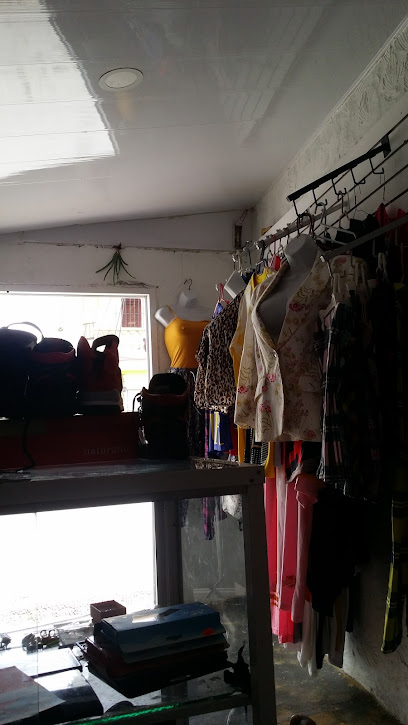
Homerun Tienda
Explore Homerun Tienda in Santiago de los Caballeros for a unique shopping experience featuring exquisite home goods and local craftsmanship.
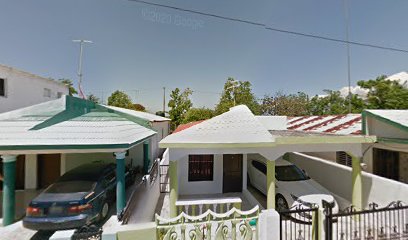
Mini Market Los Muchachos LR- NETWORKS
Discover the vibrant flavors and local culture at Mini Market Los Muchachos in Santiago de los Caballeros.
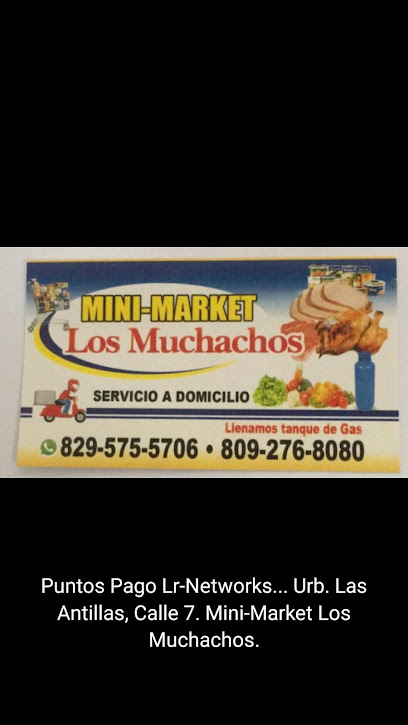
THE BLACK BARBER SHOP
Experience the authenticity of Dominican grooming culture at The Black Barber Shop in Santiago de los Caballeros.
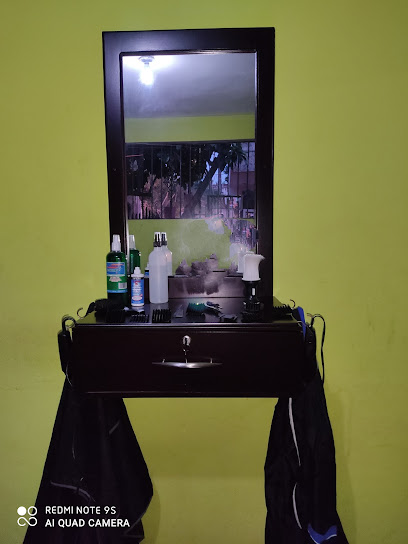
Nika’s closet
Discover unique fashion and accessories at Nika’s Closet, a treasure trove of Dominican craftsmanship in Santiago de los Caballeros.
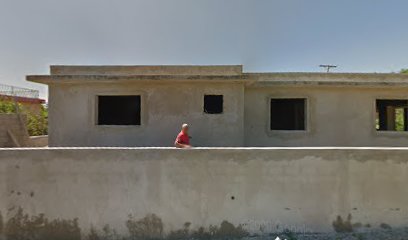
Variedades Rosalina
Explore Variedades Rosalina in Santiago de los Caballeros for unique Dominican crafts and souvenirs that capture the essence of local culture.

La esquina del clímax
Explore La esquina del clímax in Santiago de los Caballeros: a charming lingerie store offering quality, style, and a unique shopping experience.
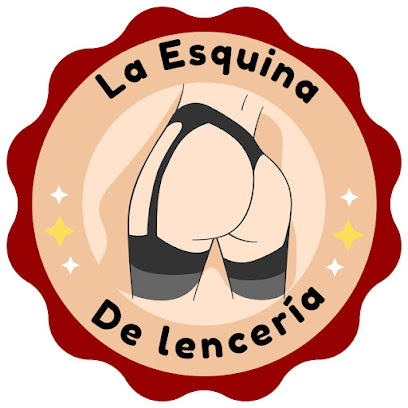
Colmado la pampara santiago de los caballero casa#29 calle #8
Experience the vibrant culture of Santiago de los Caballeros at Colmado La Pampara, your go-to store for authentic Dominican products.
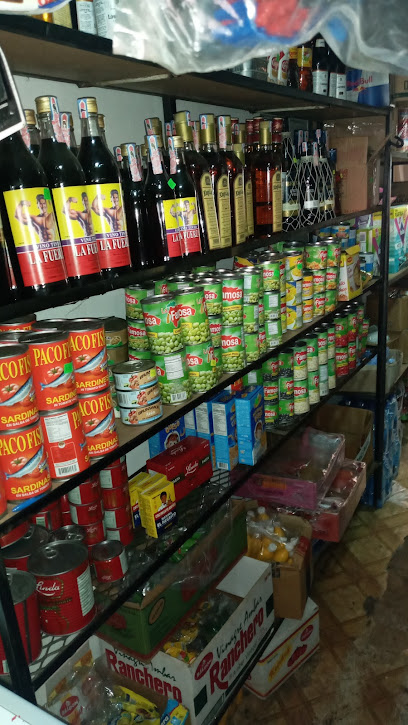
Ashlyshopping
Discover the trendiest clothing and unique fashion finds at Ashlyshopping in Santiago de los Caballeros, a must-visit destination for every fashion lover.

Essential bars & hidden hideouts
Camp David Ranch Restaurant
Discover the flavors of the Dominican Republic at Camp David Ranch Restaurant, a culinary gem nestled in breathtaking landscapes, perfect for food lovers and event seekers.
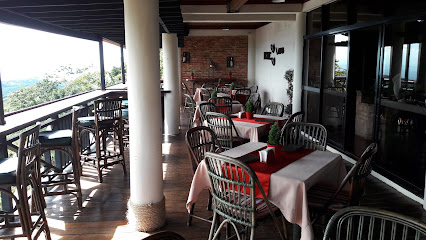
Lovera Bar 2
Experience the vibrant nightlife of Santiago at Lovera Bar 2, where great drinks and lively ambiance await.
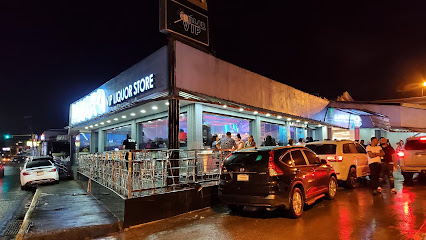
International Gozamba Bar
Immerse yourself in the lively nightlife at International Gozamba Bar, where vibrant music and delicious cocktails await in Santiago de los Caballeros.
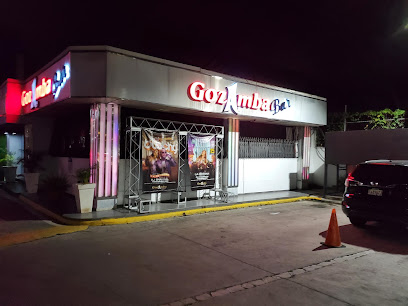
Barajando Bar
Experience the vibrant nightlife of Santiago de los Caballeros at Barajando Bar, where music, cocktails, and culture come together for an unforgettable night.
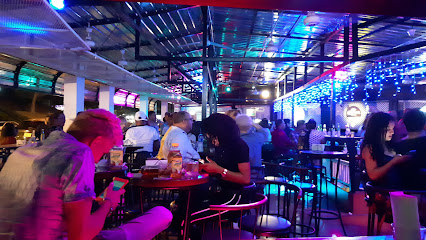
Marraya Drink, Marraya Bar
Experience the vibrant nightlife at Marraya Drink, a lively bar in Santiago de los Caballeros, offering great drinks and entertainment.

Partners Sport Bar
Discover a vibrant sports bar in Santiago de los Caballeros, where local culture meets exhilarating sports entertainment and delicious drinks.
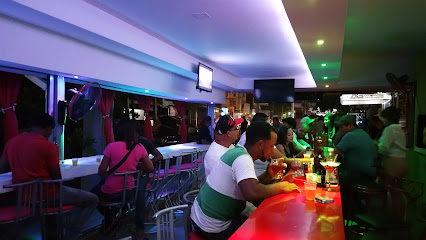
Taringa Bar
Discover the lively atmosphere and vibrant nightlife at Taringa Bar in Santiago de los Caballeros, where local flavors and friendly vibes await.
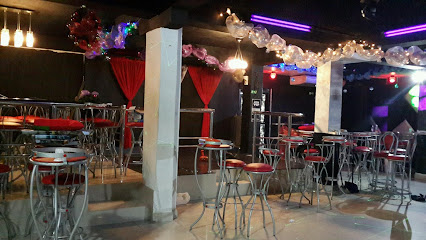
Servi Centro El Puente
Experience the vibrant nightlife at Servi Centro El Puente, a lively bar in Santiago de los Caballeros offering authentic Dominican drinks and snacks.

3D BAR
Discover the vibrant nightlife of Santiago at 3D BAR, where great drinks and a lively atmosphere await every visitor.
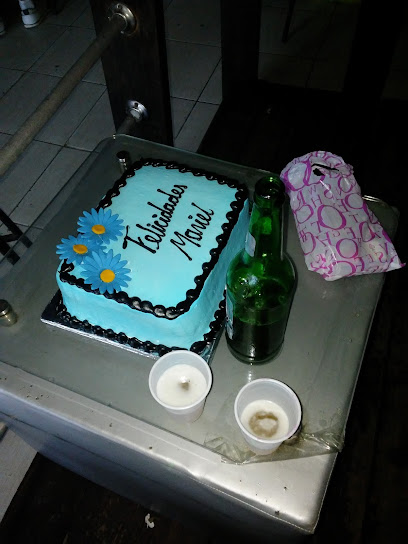
The Meneo Bar
Experience the vibrant nightlife at The Meneo Bar in Santiago de los Caballeros, where great drinks and lively music create the perfect atmosphere.
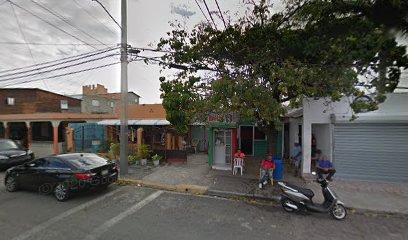
Local Phrases
-
- HelloHola
[oh-lah] - GoodbyeAdiós
[ah-dee-ohs] - YesSí
[see] - NoNo
[noh] - Please/You're welcomePor favor/De nada
[por fah-vor/deh nah-dah] - Thank youGracias
[grah-see-ahs] - Excuse me/SorryDisculpe/Perdón
[dee-skool-peh/pehr-dohn] - How are you?¿Cómo estás?
[koh-moh ehs-tahs] - Fine. And you?Bien. ¿Y tú?
[byen. ee too] - Do you speak English?¿Hablas inglés?
[ah-blahs een-glehs] - I don't understandNo entiendo
[noh ehn-tyen-doh]
- HelloHola
-
- I'd like to see the menu, pleaseMe gustaría ver el menú, por favor
[meh goos-tah-ree-ah vehr ehl meh-noo pohr fah-vor] - I don't eat meatNo como carne
[noh koh-moh kahr-neh] - Cheers!¡Salud!
[sah-loohd] - I would like to pay, pleaseMe gustaría pagar, por favor
[meh goos-tah-ree-ah pah-gahr pohr fah-vor]
- I'd like to see the menu, pleaseMe gustaría ver el menú, por favor
-
- Help!¡Ayuda!
[ah-yoo-dah] - Go away!¡Vete!
[veh-teh] - Call the Police!¡Llama a la policía!
[yah-mah ah lah poh-lee-see-ah] - Call a doctor!¡Llama a un médico!
[yah-mah ah oon meh-dee-koh] - I'm lostEstoy perdido
[ehs-toy pehr-dee-doh] - I'm illEstoy enfermo
[ehs-toy ehn-fehr-moh]
- Help!¡Ayuda!
-
- I'd like to buy...Me gustaría comprar...
[meh goos-tah-ree-ah kohm-prahr] - I'm just lookingSólo estoy mirando
[soh-loh ehs-toy mee-rahn-doh] - How much is it?¿Cuánto cuesta?
[kwan-toh kwehs-tah] - That's too expensiveEso es demasiado caro
[eh-soh ehs deh-mah-syah-doh kah-roh] - Can you lower the price?¿Puedes bajar el precio?
[pweh-dehs bah-hahr ehl pree-syoh]
- I'd like to buy...Me gustaría comprar...
-
- What time is it?¿Qué hora es?
[keh oh-rah ehs] - It's one o'clockEs la una en punto
[ehs lah oo-nah ehn poon-toh] - Half past (10)Las diez y media
[lahs dyehs ee meh-dee-ah] - MorningMañana
[mah-nyah-nah] - AfternoonTarde
[tahr-deh] - EveningNoche
[noh-cheh] - YesterdayAyer
[ah-yehr] - TodayHoy
[oy] - TomorrowMañana
[mah-nyah-nah] - 1Uno
[oo-noh] - 2Dos
[dohs] - 3Tres
[trehs] - 4Cuatro
[kwah-troh] - 5Cinco
[seen-koh] - 6Seis
[says] - 7Siete
[syeh-teh] - 8Ocho
[oh-choh] - 9Nueve
[nweh-veh] - 10Diez
[dyehs]
- What time is it?¿Qué hora es?
-
- Where's a/the...?¿Dónde está...?
[dohn-deh ehs-tah] - What's the address?¿Cuál es la dirección?
[kwal ehs lah dee-rehk-syon] - Can you show me (on the map)?¿Puedes mostrarme (en el mapa)?
[pweh-dehs mohs-trar-meh (ehn ehl mah-pah)] - When's the next (bus)?¿Cuándo es el próximo (autobús)?
[kwan-doh ehs ehl proh-ksee-moh (ow-toh-boos)] - A ticket (to ....)Un boleto (para ....)
[oon boh-leh-toh (pah-rah)]
- Where's a/the...?¿Dónde está...?
History of Los Salados
-
Los Salados, located on the outskirts of Santiago, has its roots in the colonial era, when the region was first settled by the Spanish in the late 15th century. The area was primarily agricultural, with sugar cane plantations becoming the backbone of the local economy. This agricultural focus laid the foundation for the community's development and its cultural practices, which remain evident today.
-
The Haitian Revolution (1791-1804) had a significant impact on the Dominican Republic, including Los Salados. The influx of Haitian refugees and the subsequent tensions between different cultural groups transformed the demographic landscape of the area. This mixture of cultures contributed to a unique identity within Los Salados, blending Dominican and Haitian influences in language, music, and culinary traditions.
-
Throughout the 20th century, Los Salados, like much of Santiago, experienced periods of political instability and civil unrest. Notably, during the Trujillo era (1930-1961), the community faced the oppressive regimes that shaped much of the Dominican experience. This period forced many residents to adapt and forge a resilient community spirit, which remains a hallmark of Los Salados today.
-
The late 20th century saw a resurgence of cultural pride within Los Salados. As the community began to reclaim its identity, local festivals celebrating Dominican folklore, music, and cuisine became prominent. This revival has been instrumental in fostering a sense of belonging among residents and attracting visitors to the area, showcasing the rich cultural tapestry that defines Los Salados.
-
In recent years, Los Salados has experienced infrastructural improvements and economic development initiatives aimed at promoting local tourism. The community's strategic location near Santiago allows it to serve as a gateway for visitors exploring the region. Efforts to preserve its cultural heritage while embracing modernity reflect the dynamic nature of Los Salados as it continues to evolve.
Los Salados Essentials
-
Los Salados is accessible from various neighborhoods in Santiago. The most common route is to take a taxi or a shared motoconcho (motorcycle taxi) from the city center, which typically takes around 15-20 minutes. Alternatively, local buses operate routes that connect to Los Salados, with stops throughout Santiago. If you are coming from the Cibao International Airport, you can hire a taxi or arrange for a private transfer to reach Los Salados directly.
-
Los Salados is best explored on foot, as many attractions are within a short distance of each other. For longer distances, local buses and shared taxis (carros públicos) are available and provide an affordable way to move around. Bicycles can also be rented from local shops, offering a fun way to explore the neighborhood at your own pace. However, be cautious of traffic, as it can be hectic.
-
Los Salados is generally safe for tourists, but it is wise to stay vigilant. Avoid walking alone at night in less populated areas, especially near the outskirts of the neighborhood. While violent crime is rare, petty theft can occur in crowded areas. Be particularly cautious around market areas and avoid displaying valuable items. It's advisable to ask locals for guidance on areas to avoid.
-
In case of emergency, dial 911 for police assistance and 911 or 809-541-1111 for medical emergencies. Familiarize yourself with the locations of nearby hospitals and clinics. It is also advisable to have travel insurance that covers medical emergencies. Pharmacies are available throughout Los Salados for minor health issues, where you can find over-the-counter medications.
-
Fashion: Do dress modestly, especially when visiting local churches or community events. Avoid overly revealing clothing. Religion: Do respect local customs and traditions. It's courteous to remove hats and sunglasses when entering places of worship. Public Transport: Do offer your seat to elderly passengers. Don’t engage in loud conversations or eat on public transport. Greetings: Do greet people with a friendly handshake and a smile. Don't be overly formal; a casual approach is appreciated. Eating & Drinking: Do try local street food and accept invitations to eat from locals. Don’t waste food or refuse offerings, as it may be seen as disrespectful.
-
To experience Los Salados like a local, visit the neighborhood's markets where you can buy fresh produce and traditional products. Engage with local vendors, as they often enjoy sharing stories about their goods. Participate in community events or festivals if your visit coincides with one, as these offer a glimpse into local culture. Don't miss the chance to try traditional Dominican dishes at local eateries, and be sure to explore nearby parks for a taste of daily life in the neighborhood.
Trending Landmarks in Los Salados
-
Monument to the Heroes of the Restoration
-
Duarte Park
-
Jardín Botánico de Santiago Profesor Eugenio de Jesús Marcano Fondeur
-
Fortaleza San Luis
-
Parque Metropolitano de los Jardines
-
Tres Cruces Park
-
Casa de Arte
-
El Saltadero de Jacagua
-
LOS SALADOS
-
Palacio Consistorial
-
MI VIVIENDA LOS SALADOS
-
Boulevard Las Tres Cruces
-
Los Salados Viejos
-
Centro de Recreo
-
Salados
Nearby Cities to Los Salados
-
Things To Do in Jarabacoa
-
Things To Do in Hinche
-
Things To Do in Santo Domingo
-
Things To Do in Samana
-
Things To Do in Cap-Haïtien
-
Things To Do in Port-au-Prince
-
Things To Do in Petionville
-
Things To Do in Gonaïves
-
Things To Do in Salt Cay
-
Things To Do in Saint-Marc
-
Things To Do in La Romana
-
Things To Do in Cockburn Town
-
Things To Do in Grand Turk
-
Things To Do in Bayahibe
-
Things To Do in Jacmel



